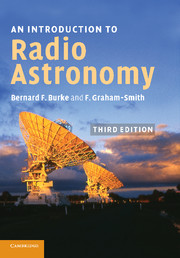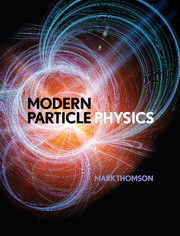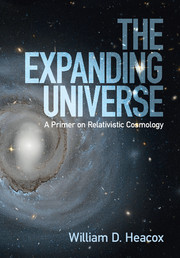Refine listing
Actions for selected content:
17002 results

An Introduction to Radio Astronomy
-
- Published online:
- 28 May 2018
- Print publication:
- 17 September 2009
-
- Textbook
- Export citation

Modern Particle Physics
-
- Published online:
- 28 May 2018
- Print publication:
- 05 September 2013
-
- Textbook
- Export citation

The Expanding Universe
- A Primer on Relativistic Cosmology
-
- Published online:
- 28 May 2018
- Print publication:
- 26 November 2015
-
- Textbook
- Export citation

Gravitational Lensing
-
- Published online:
- 28 May 2018
- Print publication:
- 08 June 2017
-
- Textbook
- Export citation
Epigraph
-
- Book:
- Astrobiology, Discovery, and Societal Impact
- Published online:
- 26 April 2018
- Print publication:
- 03 May 2018, pp vi-vi
-
- Chapter
- Export citation
9 - Astropolicy
- from Part III - Impact!
-
- Book:
- Astrobiology, Discovery, and Societal Impact
- Published online:
- 26 April 2018
- Print publication:
- 03 May 2018, pp 269-302
-
- Chapter
- Export citation
Dedication
-
- Book:
- Astrobiology, Discovery, and Societal Impact
- Published online:
- 26 April 2018
- Print publication:
- 03 May 2018, pp v-v
-
- Chapter
- Export citation
Part I - Approaches
-
- Book:
- Astrobiology, Discovery, and Societal Impact
- Published online:
- 26 April 2018
- Print publication:
- 03 May 2018, pp 11-96
-
- Chapter
- Export citation
Introduction
-
- Book:
- Astrobiology, Discovery, and Societal Impact
- Published online:
- 26 April 2018
- Print publication:
- 03 May 2018, pp 1-10
-
- Chapter
- Export citation
Index
-
- Book:
- Astrobiology, Discovery, and Societal Impact
- Published online:
- 26 April 2018
- Print publication:
- 03 May 2018, pp 375-384
-
- Chapter
- Export citation
5 - Is Human Knowledge Universal?
- from Part II - Critical Issues
-
- Book:
- Astrobiology, Discovery, and Societal Impact
- Published online:
- 26 April 2018
- Print publication:
- 03 May 2018, pp 141-175
-
- Chapter
- Export citation
Copyright page
-
- Book:
- Astrobiology, Discovery, and Societal Impact
- Published online:
- 26 April 2018
- Print publication:
- 03 May 2018, pp iv-iv
-
- Chapter
- Export citation
Part II - Critical Issues
-
- Book:
- Astrobiology, Discovery, and Societal Impact
- Published online:
- 26 April 2018
- Print publication:
- 03 May 2018, pp 97-206
-
- Chapter
- Export citation
8 - Astroethics
- from Part III - Impact!
-
- Book:
- Astrobiology, Discovery, and Societal Impact
- Published online:
- 26 April 2018
- Print publication:
- 03 May 2018, pp 240-268
-
- Chapter
- Export citation
3 - Analogy
- from Part I - Approaches
-
- Book:
- Astrobiology, Discovery, and Societal Impact
- Published online:
- 26 April 2018
- Print publication:
- 03 May 2018, pp 65-96
-
- Chapter
- Export citation
Part III - Impact!
-
- Book:
- Astrobiology, Discovery, and Societal Impact
- Published online:
- 26 April 2018
- Print publication:
- 03 May 2018, pp 207-312
-
- Chapter
- Export citation
Contents
-
- Book:
- Astrobiology, Discovery, and Societal Impact
- Published online:
- 26 April 2018
- Print publication:
- 03 May 2018, pp vii-x
-
- Chapter
- Export citation
Bibliography
-
- Book:
- Astrobiology, Discovery, and Societal Impact
- Published online:
- 26 April 2018
- Print publication:
- 03 May 2018, pp 343-374
-
- Chapter
- Export citation
4 - Can We Transcend Anthropocentrism?
- from Part II - Critical Issues
-
- Book:
- Astrobiology, Discovery, and Societal Impact
- Published online:
- 26 April 2018
- Print publication:
- 03 May 2018, pp 99-140
-
- Chapter
- Export citation
10 - Summary and Conclusions
- from Part III - Impact!
-
- Book:
- Astrobiology, Discovery, and Societal Impact
- Published online:
- 26 April 2018
- Print publication:
- 03 May 2018, pp 303-312
-
- Chapter
- Export citation
